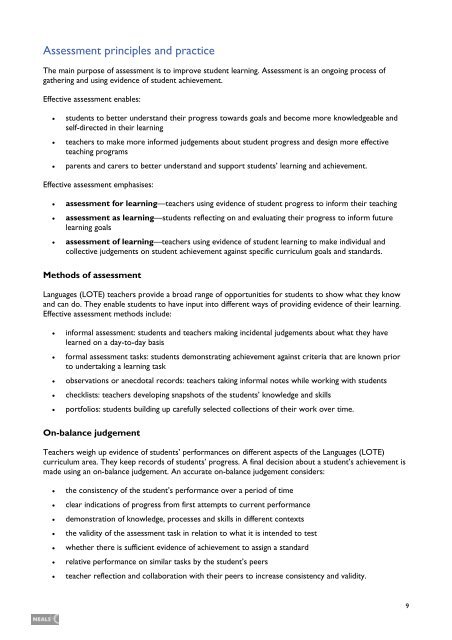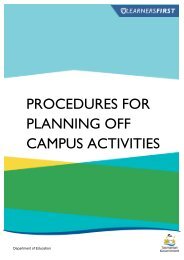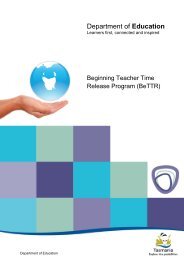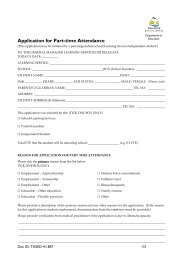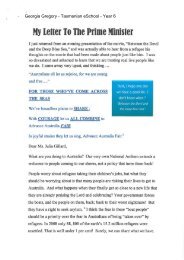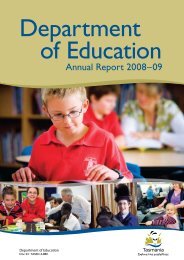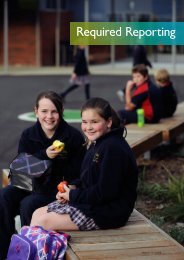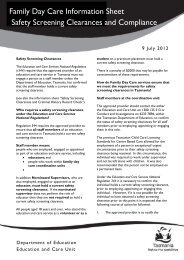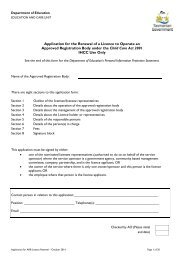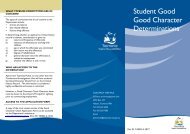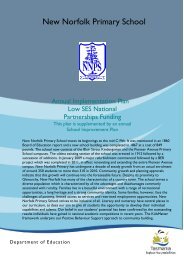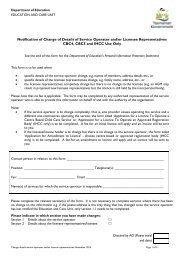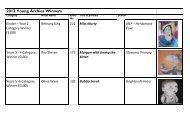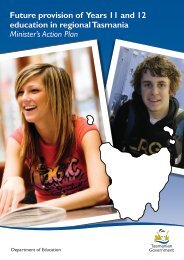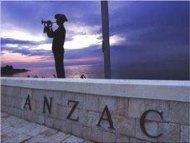Tas Curriculum K-10 - Languages - Italian - Department of Education
Tas Curriculum K-10 - Languages - Italian - Department of Education
Tas Curriculum K-10 - Languages - Italian - Department of Education
Create successful ePaper yourself
Turn your PDF publications into a flip-book with our unique Google optimized e-Paper software.
Assessment principles and practice<br />
The main purpose <strong>of</strong> assessment is to improve student learning. Assessment is an ongoing process <strong>of</strong><br />
gathering and using evidence <strong>of</strong> student achievement.<br />
Effective assessment enables:<br />
• students to better understand their progress towards goals and become more knowledgeable and<br />
self-directed in their learning<br />
• teachers to make more informed judgements about student progress and design more effective<br />
teaching programs<br />
• parents and carers to better understand and support students’ learning and achievement.<br />
Effective assessment emphasises:<br />
• assessment for learning—teachers using evidence <strong>of</strong> student progress to inform their teaching<br />
• assessment as learning—students reflecting on and evaluating their progress to inform future<br />
learning goals<br />
• assessment <strong>of</strong> learning—teachers using evidence <strong>of</strong> student learning to make individual and<br />
collective judgements on student achievement against specific curriculum goals and standards.<br />
Methods <strong>of</strong> assessment<br />
<strong>Languages</strong> (LOTE) teachers provide a broad range <strong>of</strong> opportunities for students to show what they know<br />
and can do. They enable students to have input into different ways <strong>of</strong> providing evidence <strong>of</strong> their learning.<br />
Effective assessment methods include:<br />
• informal assessment: students and teachers making incidental judgements about what they have<br />
learned on a day-to-day basis<br />
• formal assessment tasks: students demonstrating achievement against criteria that are known prior<br />
to undertaking a learning task<br />
• observations or anecdotal records: teachers taking informal notes while working with students<br />
• checklists: teachers developing snapshots <strong>of</strong> the students’ knowledge and skills<br />
• portfolios: students building up carefully selected collections <strong>of</strong> their work over time.<br />
On-balance judgement<br />
Teachers weigh up evidence <strong>of</strong> students’ performances on different aspects <strong>of</strong> the <strong>Languages</strong> (LOTE)<br />
curriculum area. They keep records <strong>of</strong> students’ progress. A final decision about a student’s achievement is<br />
made using an on-balance judgement. An accurate on-balance judgement considers:<br />
• the consistency <strong>of</strong> the student’s performance over a period <strong>of</strong> time<br />
• clear indications <strong>of</strong> progress from first attempts to current performance<br />
• demonstration <strong>of</strong> knowledge, processes and skills in different contexts<br />
• the validity <strong>of</strong> the assessment task in relation to what it is intended to test<br />
• whether there is sufficient evidence <strong>of</strong> achievement to assign a standard<br />
• relative performance on similar tasks by the student’s peers<br />
• teacher reflection and collaboration with their peers to increase consistency and validity.<br />
9


